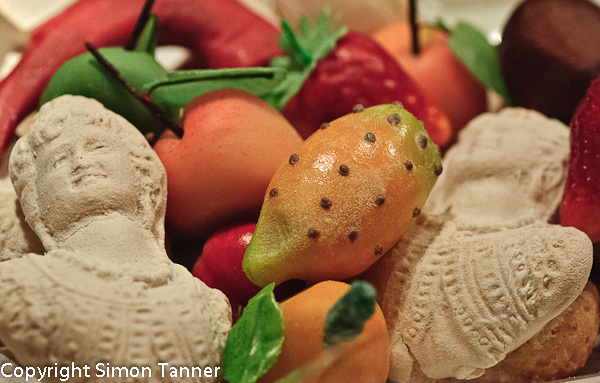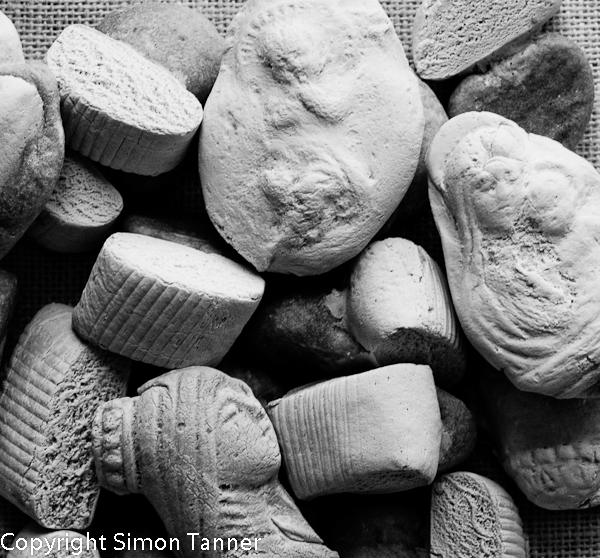 Yesterday I was back at my favourite pasticceria, Scandaliato (http://passioneat.it/2013/12/dolce-natale-sweet-christmas/). The Italians say that “la qualità non ha prezzo” – you can’t put a price on quality. Let me set you straight on that one. You most definitely can, and it’s high. To try and make myself feel better, let’s just say it’s a price I’m prepared to pay. That, at least, is how I’m going to pitch it to my wife. And anyway, it’s not entirely my fault. I mean, how am I expected to stay away from a pastry shop in which the signora who owns the place always presents me to her other customers, smiling indulgently, as “the Englishman who’s more Sicilian than most Sicilians – he eats his cannoli with candied peel mixed in with the ricotta, the way you’re supposed to. There are so few left like him”. A bit of food flattery, I’m afraid, and I’m anyone’s.
Yesterday I was back at my favourite pasticceria, Scandaliato (http://passioneat.it/2013/12/dolce-natale-sweet-christmas/). The Italians say that “la qualità non ha prezzo” – you can’t put a price on quality. Let me set you straight on that one. You most definitely can, and it’s high. To try and make myself feel better, let’s just say it’s a price I’m prepared to pay. That, at least, is how I’m going to pitch it to my wife. And anyway, it’s not entirely my fault. I mean, how am I expected to stay away from a pastry shop in which the signora who owns the place always presents me to her other customers, smiling indulgently, as “the Englishman who’s more Sicilian than most Sicilians – he eats his cannoli with candied peel mixed in with the ricotta, the way you’re supposed to. There are so few left like him”. A bit of food flattery, I’m afraid, and I’m anyone’s.
So, what have I been spending my hard-earned euros on this time? The good stuff. We’re talking hard-core traditional Sicilian here: two sweets which are typical of this time of year – frutta martorana and scardellini, aka ossa di morti (yes, for those of you with a bit of Italian, that does indeed mean “the bones of the dead”). The tradition comes from the fact that in Italy, the 2nd of November, the day after All Hallows’ Day, is known as i morti, “the Day of the Dead”, and it’s traditional to go and visit the dearly departed members of the family at the cemetery. In some Catholic countries, such as Mexico, they make a real event out of it. That’s not quite the case here in Sicily, but if you happen to be here at this time of year, just pop into your nearest cemetery and take a look. You’ll see flowers on practically every tomb (some people even take extra, to leave on neglected graves), so it actually looks pretty festive. Well, as festive as a cemetery is likely to get, anyway. I mean, there are clearly limits to just how much of a party mood you can muster in this kind of setting.
Anyway, enough of the anthropology. The fact is, that to commemorate this festival, the Sicilians make sweets that are supposed to resemble bones. The ossa dei morti, and the paste di garofano, from the same recipe but bigger, in the form of cameos typically depicting Mary or angels, are horribly difficult to make, or horribly lengthy to make anyway, and have a dense, spongy base (the beige bit) with a crisp, hollow white cap (the imitation bone or cameo bit). They taste more or less strongly of cloves (garofono in Italian), the “more” or “less” depending on how good the pasticceria is, and therefore how much they will spend on (and then charge you for) them. Yes, you’ve guessed it – we’re back to the “you can’t put a price on quality” maxim. If you like cloves, you’ll love them. If you don’t, then you clearly won’t.
Then we have the frutta martorana. This is basically marzipan, moulded to look like fruit and vegetables. The skill is in the sculpting rather than the substance, and will delight the eye more than the palate. I mean, I love marzipan, especially when made from fresh almonds. But marzipan is marzipan, let’s face it; it’s pretty monothematic.
OK, so to be honest, they’re nothing special. Marzipan on one hand, and clove-flavoured spongy biscuits on the other. But they’re an expression of tradition, and that in itself means something, and makes them worth preserving. For example, I know hardly anyone who positively enjoys Christmas cake. We don’t mind it, but if we went mad for it, we’d eat it the rest of the year. And we don’t. However, take it away, and there would, quite literally, be something missing from Christmas. Like all traditional food, it has an emotional, nostalgic value that you can hardly reduce to ingredients. And these Sicilian sweets are no different.
Ah, by the way, since anything sweet has a very short life expectancy in my house, this morning I was forced to buy in further stock from my second-favourite pasticceria, namely Irrera, another local institution. Not bad, chaps, and definitely pretty (see the second photo), but you need more essential oil of cloves in your recipe. Believe me, I should know – I’m more Sicilian than the lot of you, apparently.
 English
English
I don’t like biscuits. I’m fat enough already. Big Nige